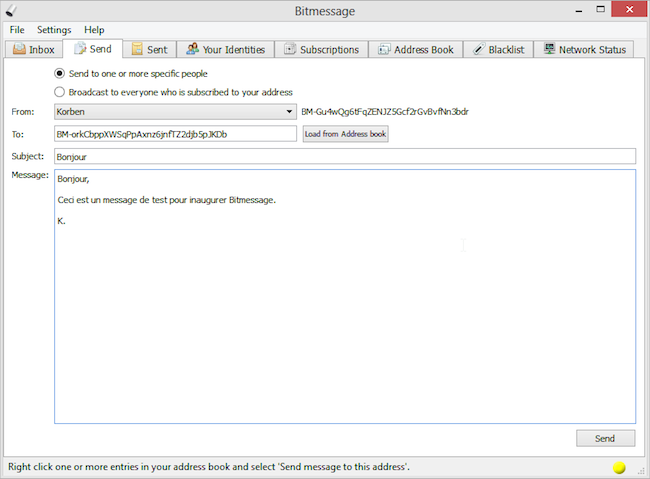
This means Signal’s servers must map between each user’s phone number (or other identifier) with their matching identity key. In the case of Signal, the recipient’s long term public key and identity are the same, and this is referred to as the ‘identity key’. The reason for this is fairly obvious - when you want to message someone on one of the these messengers (Signal, for example) you need to know two things before your first message can be sent: the recipient’s identifier, so you can tell Signal who you’re messaging,) and the recipient’s public key, so you can encrypt your message. The issue with the above applications is that they rely on an authentication method called Trust on First Use (TOFU). To make matters worse, at any point during all conversations on messengers like this, your messages could be re-routed to a completely different person without you ever knowing.Īpps suffering from this trust issue include popular messengers like Signal, WhatsApp, Telegram, Facebook Messenger, and Threema. Namely, you must fully trust the servers of these applications to correctly direct your messages to the intended recipient, as well as to give you the information required to correctly encrypt messages. Most messengers that require a phone number, email address, or username to sign up have a trust problem. Obviously end-to-end encryption is a big part of the solution here, but it’s not a silver bullet for trust issues when it comes to private messengers. But the good guys - the encrypted messaging apps like Session - need to guarantee your messages are arriving without being exposed or tampered with without placing trust in the server(s) or service provider powering the application. Some companies and their apps can’t be trusted to keep your conversations private. With some messengers (they know who they are), people now realise that’s not the case. Whenever you send a message, you expect it to arrive at its intended destination without being re-routed to, read by, or responded to by anyone but the person (or people) you sent the message to. When we say TOFU, we’re talking about Trust On First Use. Requires VT-d/IOMMU and few other virtualization features.We’re here to talk about TOFU, and no, we don’t mean soy-based protein. It will use HVMs (or probably slightly different technology in 4.1) instead of PVs, so it won't require unfragmented memory. * Shut some VMs down, ideally with temporarily disabled qmemman. * Attach USB controller to a HVM (which will probably consume more memory, but it won't require it unfragmented) – requires VT-d/IOMMU.

* Give sys-usb as low memory as possible. Note that starting a non-HVM with USB controller (or any other PCI device) might be a little challenging sometimes, because PV with PCI require unfragmented memory. You can also try to start sys-usb temporarily and then (when you have no remaining connected device) to reassign the USB controller back to dom0: You are right, support for USB touchscreen is incomplete, see. Qubes-usb-proxy is installed in the destination VM, but I don't have a When I try the above method substituting my devices and dom0 instead
Bitmessage mobile android#
If not, unmount and remount the phone once:Ĭan attaching an android phone be accomplished without having a usb-vm?

> 6) you should see your phone as an additional device beneath the > 4) mount your phone via sys-usb to your AppVM (I've choosen my > sys-usb:3-3 04xx:88xx Android_Androidxxxxxxxxxxx

> 3) Launch a dom0 Terminal, you should see your phone after entering: > 2) on the phone, switch from "Charging only" to "USB Data tranfser > a few minutes ago and could access it without any problems: I have never attached my Android phone to Qubes before, but tried so


 0 kommentar(er)
0 kommentar(er)
